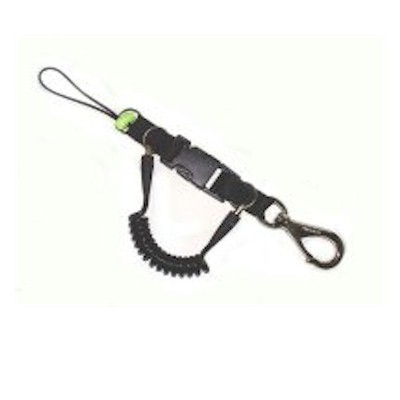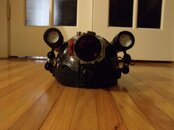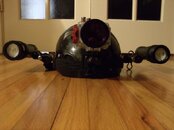As stated before, "there is no correct way to carry a camera." With that said, I'll try to shed some light on the situation as it works for me. I think that the dive dictates the manner in which you carry the camera. i.e.
Normal everyday diving I will use my mask mount adapter. It works very well but make sure that you have it adjusted to where it sees what you are looking at. (This past week we were in the caves. I asked my buddy to adjust the camera. I will stop and look at an object and he was to look thru the display and adjust the camera accordingly. Well, he got it wrong and we had a rather good 45 minutes of video of the cave floor in Orange Grove).
Tray. The best manner to hold the camera when dedicated to shooting video. You get to frame the picture and there is less movement and shaking that you get when having the camera mounted to the mask or helmet. Only problem is having to hold the camera when using a DPV, using a reel, putting in a jump. shooting a lift bag, etc. You can use two retractors each one clipped to your D rings that will pull the camera back toward your chest. Weight plays a factor here.
Helmet mounted. Getting to be one of my favorite. I rather like this setup because I am able to have the lights mounted on the sides of the helmet as well as having the camera mounted. When using the mask adapter you lose the lights on the same plane of the camera. So with this setup you get hands free camera, lights mounted on the same plane as the camera and no way to drop it. The only problems are head movement, adjustment needs to be made to your point of view and make darn sure that you don't let it get in the way of long hose donation.
I forgot to add that Z Gear has a mount that I got to bata test and it has some rather good features.
Here are a couple of pictures of my helemt setup:







